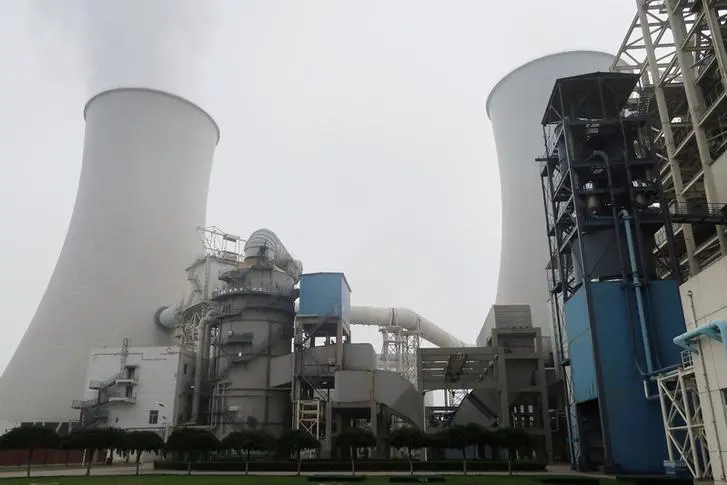PHOTO
China has shelved around half of its global investments in coal-fired power plants, at a cost so far of at least $65 billion, according to a new report.
In 2019 and 2020 alone, Chinese funded coal-fired power plants worth $47 billion were cancelled.
Since 2015, some 37 Chinese-backed coal-fired plants have been shelved. Of the 52 Chinese funded coal-fired power projects announced since 2014, only one has opened, according to the report, compiled jointly by Global Energy Monitor (GEM) and the Beijing-based IIGF Green BRI Centre.
GEM is a project funded by charitable donations from foundations and individuals, including the Energy Foundation and the European Climate Foundation.
Between 2014 and 2020, some $160 billion of Chinese-backed coal-fired power plants around the globe were planned or announced. While no new Chinese-backed coal-fired power plant was announced in 2020, new coal-fired projects were announced by India, South Korea and Thailand.
Recent data show that the price of electricity from new coal-fired power stations is about 500 percent more expensive than from solar powered plants.
Many BRI countries, including Pakistan and Bangladesh, have already announced they will phase out new coal investments, and in May, G7 countries announced a halt to funding for overseas coal financing.
Biggest financier of coal power
China has been the largest financer of overseas coal power in recent decades. As coal combustion contributes to over 40 percent of global energy-related emissions, coal-related investments have come under scrutiny, with many countries announcing a phase-out of coal investments in order to protect the world from a climate catastrophe.
Relevant Chinese institutions have been engaged in re-evaluating investments in overseas coal-fired power plants in cooperation with international partners, the report stated, adding that in 2020, the majority of China’s energy investments were in renewable energy.
In December 2020, the BRI Green Development Coalition (BRIGC) under the Ministry of Ecology and Environment, put all coal-related investments on a “restricted” project list through an innovative Traffic Light System, which ranks projects on emission levels and their ‘green’ credentials.
In coal-fired project finance, Chinese institutions are reported to currently finance about 53.1 GW coal-fired power at $50 billion, making it the global leader, ahead of Japan, and South Korea. However, when analysing the state of coal-fired power plants announced or under construction, data shows that many Chinese overseas coal investments have been stopped, delayed or cancelled.
Coal power projects shelved
Analysis by Global Energy Monitor and the IIGF Green BRI Centre revealed about 13,000 coal plants and about 150 different coal-fired power plant investments with Chinese participation outside of China. The datasets specify investors, development status over time and power generation capacity.
The latest data reveal about half of Chinese-backed coal-fired power plants have been shelved.
Between the second half of 2014 and the end of 2020, 52 coal-fired power projects with Chinese financial participation outside of China had been announced. Of these projects, only one has begun operations, the 1.3 GW Payra Patuakhali coal power station in Kalapara, Bangladesh, in the first half of 2020.
At the same time, 25 of the projects announced since 2014 had been shelved and eight were cancelled.
By 2020, the number of projects moving forward totalled less than $2 billion. At the same time, the value of projects whose status changed to cancelled, mothballed or shelved, increased from about $2 billion in 2015 to about $22 billion in 2019 and $25 billion by 2020.
Several countries have been particularly affected by coal-fired powerplants being mothballed, shelved or otherwise cancelled. Zimbabwe had announced multiple projects that have been shelved or cancelled over the past years – with a total value of about $15 billion. A close second is Russia, where about $12.5 billion of projects have been either shelved or cancelled.
Kenya’s Lamu coal-fired power plant was mothballed in 2019 due to protests and a legal ruling that found issues in the Environmental Impact Assessment (EIA) License – months after construction had started. The Industrial and Commercial Bank of China (ICBC) had originally agreed to finance the $1.2 billion project, but pulled out.
Egypt’s Hamarawein 6.6GW coal-fired power plant was cancelled in February 2020. Of the $4.4 billion total cost, $3.7 billion would have come from China Development Bank (CDB). Egypt proposed to invest in renewable energies instead.
Bangladesh also announced in November 2020 that it would halt construction of its coal-fired power plants and requested Chinese partners to shift funding to renewable energy sources.
Impact on Chinese developers
Multiple Chinese companies have been affected by projects being reversed. The exact values are hard to establish as not all financing arrangements are publicly available.
Among the companies most affected by distressed projects are China Datang, which had been engaged in distressed projects worth $10 billion (China Datang would not be the sole investor in these projects) and Power China, which had been engaged in distressed projects with a value of $13.4 billion. In comparison, ICBC was involved in distressed projects worth about $5 billion.
The report states: “To understand the acceleration in reducing coal-fired power plants investments, it is important to understand three interrelated financial reasons:
*Rising cost of financing for coal-fired power plants
*Increasing risk for investors, particularly carbon price risks
*Decreasing cost of alternative sources of energy, particularly solar and wind
With increasing understanding of climate-related financial risks for high-emitting assets, financing costs for coal-fired power plants have increased over the past years.
A study published in May 2021 by Oxford Sustainable Finance Programme analysed the financing costs for coal-fired power plants and other energy technologies were compared between 2007-2010 and 2017-2020.
The authors found that the loan spread for coal power plants have increased on average by 38 percent. This compares to a decrease of financing costs of 24 percent for offshore wind, 12 percent for onshore wind, and an increase of 7 percent for gas power plant. This has made financing coal power plants the most expensive of all power generation technologies.
Fluctuating coal costs
Besides increasing financing costs for coal powered plants, operating costs have also become more volatile due to the volatile prices of coal. Coal prices have fluctuated between $40 in 2016, to about $80 in 2018, but dropped to $25 in 2020 during the coronavirus pandemic and rose recently to as much as $108 per tonne.
The report adds: “In addition to rising cost for coal and stronger competition through alternative energies, investors are also increasingly integrating climate risk into their decision-making. One of the most prominent risks is the introduction of carbon prices, which immediately affect the bottom-line of coal-fired power plants.
“World Bank statistics show that in 2021, 64 carbon pricing initiatives were in operation. This compares to 58 initiatives in 2020 and 47 in 2018. These carbon pricing mechanisms often specifically target high-emitting coal-fired power plants to charge a price for carbon emissions. Relevant carbon-prices for Chinese investors in overseas coal have particularly been introduced in South-East Asia.”
Dr Christoph Nedopil Wang, Founding Director of the Green Belt and Road Initiative Center and a Senior Research Fellow at the International Institute of Green Finance (IIGF) of the Central University of Finance and Economics (CUFE) in Beijing, China, said: “In a May 2021 study, the IEA found that no new coal mines are required if the world is serious about reducing climate emissions. Investors should look into possibilities to apply early retirement plans for existing coal plants to reduce both the high cost of producing electricity through coal and benefit from higher profit margins in green energy.
“There is a strong interest in China to expand the use of green finance to finance the green energy transition also in the BRI. Relevant challenges exist also with green energy investments and finance, such as grid flexibility and energy storage. However, overall, renewable energy investments have taken a stronger role in the BRI and with a higher demand from BRI countries for renewable energies, we see a good chance for a continuation of this development.”
(Reporting by Charles Lavery; Editing by Anoop Menon)
Disclaimer: This article is provided for informational purposes only. The content does not provide tax, legal or investment advice or opinion regarding the suitability, value or profitability of any particular security, portfolio or investment strategy. Read our full disclaimer policy here.
© ZAWYA 2021











